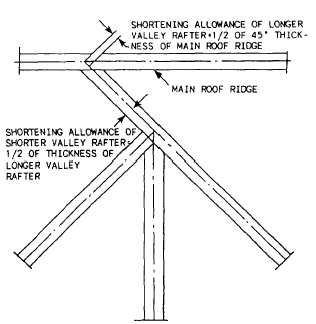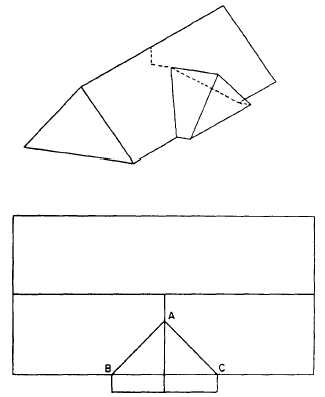Figure 2-41.-Rafter table method.
Suppose, for example, that the span of the addition in
of the addition. Since one-half the span of the addition
figure 2-40 is 30 feet and that the unit of rise of a
common rafter in the addition is 9. The total run of the
shorter valley rafter is:
Referring to the unit length rafter table in figure
2-41, you can see the bridge measure for a valley rafter
in a roof with a common rafter unit of rise of 9 is 19.21.
Since the unit of run of a valley rafter is 16.97, and the
total run of this rafter is 21.21 feet, the line length must
be the value of x in the proportional equation
16.97:19.21::21.21:x, or 24.01 feet.
An easier way to find the length of a valley rafter is
to multiply the bridge measure by the number of feet in
one-half the span of the roof. The length of the longer
valley rafter in figure 2-40, for example, would be 19.21
times one-half the span of the main roof. The length of
the shorter valley rafter is 19.21 times one-half the span
Figure 2-42.-Long and short valley rafter shortening allowance.
is 15 feet, the length of the shorter valley rafter is
15 x 9.21 = 288.15 inches, or approximately 24.01 feet.
Figure 2-42 shows the long and short valley rafter
shortening allowances. Note that the long valley rafter
has a single side cut for framing to the main-roof ridge
piece, whereas the short valley rafter is cut square for
framing to the long valley rafter.
Figure 2-43 shows another method of framing an
equal-pitch unequal-span addition. In this method, the
inboard end of the addition ridge is nailed to a piece that
hangs from the main-roof ridge. As shown in the
framing diagram, this method calls for two short valley
rafters (AB and AC), each of which extends from the
top plate to the addition ridge.
Figure 2-43.-Another method of framing equal-pitch unequal-
span intersection.
2-28





